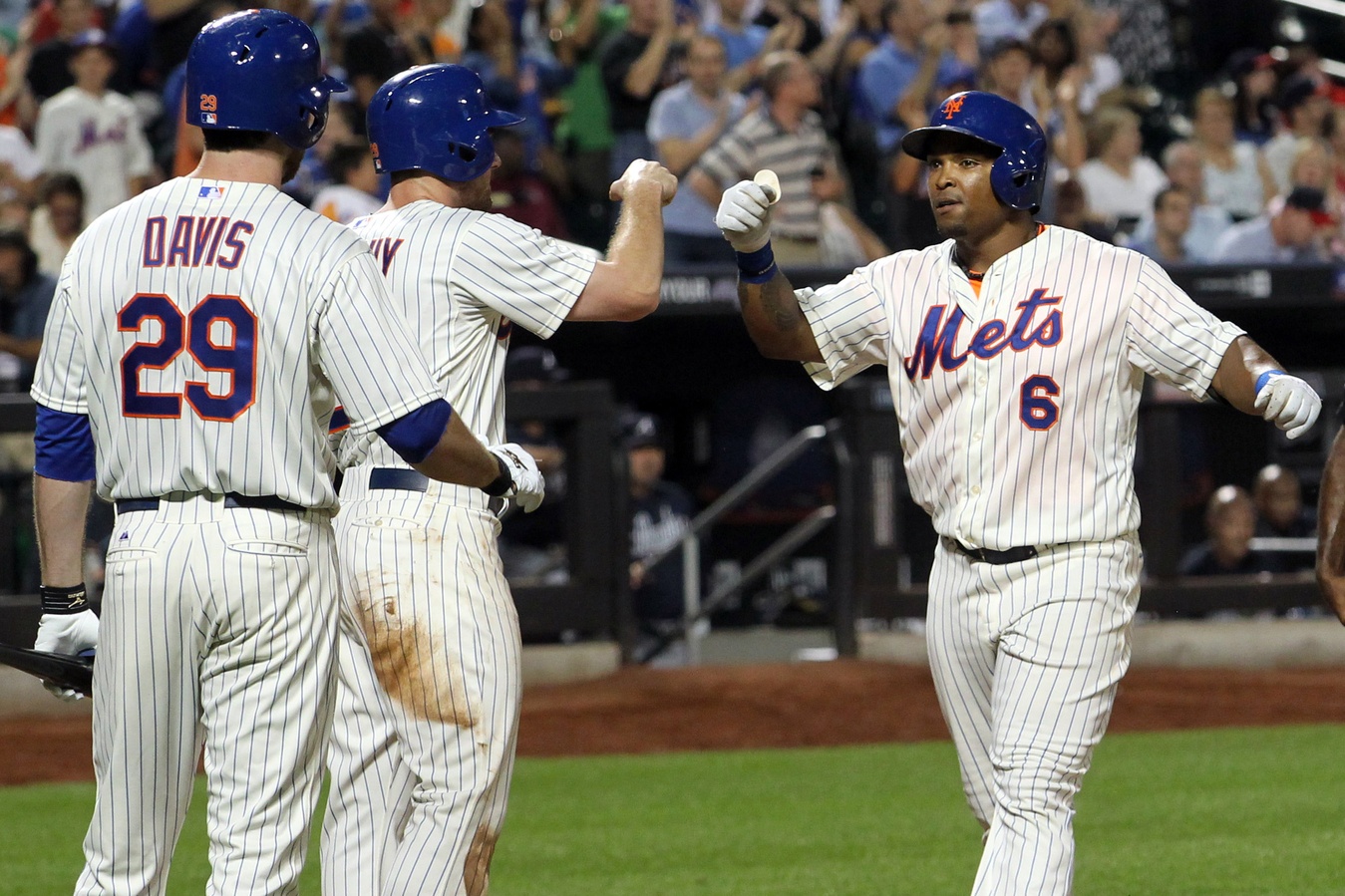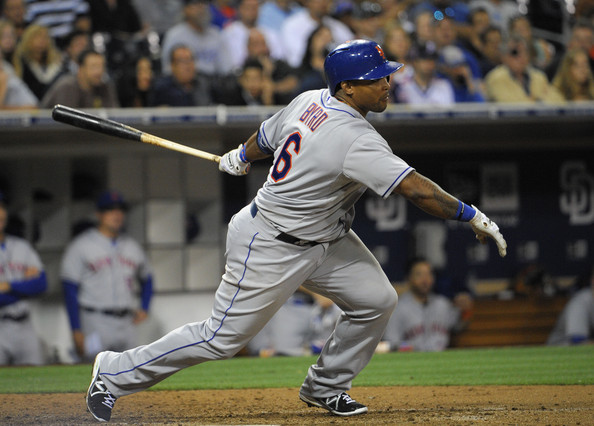
Heading into 2013, Marlon Byrd needed a fresh start. After hitting just .210/.243/.245 in 2012, he was released midseason by the Red Sox and suspended 50 games for PED’s. It didn’t look like any team would give the 35-year-old outfielder a second chance, until the Mets – a team desperate for outfield help – reached out.
With only Lucas Duda, Mike Baxter, Kirk Nieuwenhuis, and Collin Cowgill in their ranks, New York wanted a more experienced outfielder. This group combined for 1.0 WAR during the entire 2012 season, so the Mets turned to Byrd after missing out on their top targets, like all-star outfielder Michael Bourn.
“Outfield? What outfield?” General manager Sandy Alderson quipped earlier that offseason. “We’re probably gonna have to bring the fences in another 150 feet!”
Not only would Byrd help change the narrative about the Mets’ outfield, he would become a key piece in the rebuilding process, and outperform both of that year’s biggest free agent outfielders. Byrd’s 4.0 WAR ranked higher than Bourn (1.7) and former AL MVP Josh Hamilton (1.3).
It was Byrd’s power that made him such a valuable player for the Mets. He hit 21 home runs, drove in 71 RBI in 117 games, and recorded a .518 slugging percentage – the best mark on the team. His 138 OPS+ was the highest of his career, and it ranked second on the roster behind David Wright.
Everything clicked for Byrd from May 29 to Aug. 26. During this time, Byrd slashed .304/.350/.561 with 17 homeruns, and began to build significant trade value with his aggressive and powerful approach.
With the Mets in the middle of their rebuild, they dealt Byrd – along with catcher John Buck – to the Pirates for two prospects, Dilson Herrera, and Vic Black. While neither prospect experienced prolonged MLB success, the trade once looked promising. Herrera was rated No. 46 on Baseball America’s top prospects list, while Black had a 2.83 ERA in 47.2 innings of relief. But his career would be derailed due to multiple injuries.
Even though the trade didn’t work out like fans had hoped, it’s still impressive that the Mets got two solid prospects for Byrd. It was only several month prior that many thought that his career was over.
Some will point to PED’s as the cause behind Byrd’s revival – especially since he was suspended 162 games for a second PED violation in 2016 – but the argument doesn’t add up. If PED’s were what sparked Byrd’s resurgence, he wouldn’t have posted the worst numbers of his career during the year that he was suspended.
There’s more evidence to suggest that Byrd’s turnaround was the result of his new swing. Byrd was one of the early adopters of the launch angle trend that’s been revolutionizing the game. Byrd worked that offseason with his high school coach to adjust his launch angle.
“I was able to figure out how to get the ball in the air more consistently,” Byrd said to reporters, “with backspin.”
Byrd didn’t hit as many balls on the ground as a result of this approach. His ground ball rate plummeted to 39.2% after being over 40% and higher over the previous seven seasons.
Byrd also taught this approach to Justin Turner, who would transform himself from a backup infielder to a .887 OPS hitter.
“That offseason, even after the Mets let me go, I was hitting five days a week with Marlon,” Turner said to reporters.
Byrd continued thrive after the Pirates trade, batting .318/.357/.486 for Pittsburgh over the season’s final month. He also hit 25 home runs with a .757 OPS the following season with the Phillies, and he would play two more seasons before his second suspension marked the end of his 15-year career.
Even if some still don’t believe Byrd’s defense about his PED suspensions, his 2013 season is still a noteworthy one. With Matt Harvey‘s dominance, and Zack Wheeler’s debut, the Mets’ were starting to trend upwards, and Byrd’s solid season played a role in giving the team more legitimacy.
















